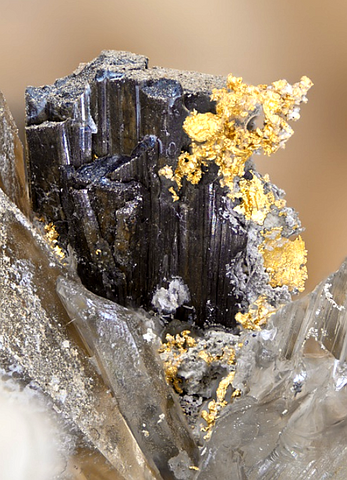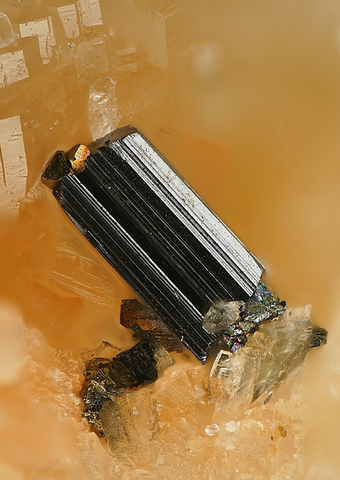 Brannerite - Encyclopedia
Brannerite - Encyclopedia
Class : Oxides and hydroxides
Subclass : Oxides
Crystal system : Monoclinic
Chemistry : (U,Ca,Y,Ce)(Ti,Fe)2O6
Rarity : Uncommon
Brannerite is a mineral discovered in the Idaho placers. Uranium is strongly oxidized there in the form of U6+, and frequently replaced by calcium (more than 3% of CaO), thorium (13% of ThO2), cerium (7% of Ce2O3), and yttrium (6.5% Y2O3). Its name was given to it in honor of Casper Branner, professor of geology and president of Stanford University. It is found in granitic pegmatites and in certain hydrothermal veins as well as in the alluvial deposits associated with them (Blind River, Ontario, Canada). It is a frequently metamict mineral of variable hue, black to yellow-brown, sometimes black-greenish or yellow-orange. The crystals are elongated, orthorhombic, often flattened on {010}. It sometimes constitutes a uranium ore, especially in alluvium.
Main photo : Brannerite from Power Station, Sportgastein, Austria © Stephan Wolfsried
Brannerite in the World

Twinning
No twin known for this mineral species.
Fakes and treatments
No fake inventories for this mineral species.
Hardness : 4.5 to 5.5
Density : 4.2 to 5.4
Fracture : Conchoidal
Trace : Brown-yellow to brown-green
TP : Opaque
RI : 2.23 to 2.3
Birefringence : -
Optical character : -
Pleochroism : None
Fluorescence : None
Solubility : Sulfuric acid
Magnetism : None
Radioactivity : Strong

